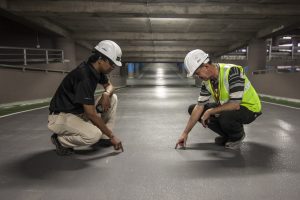 Print a Sign-In Sheet | Spanish Version Coming Soon
Print a Sign-In Sheet | Spanish Version Coming Soon
What do you do when your company experiences an accident or a “near miss?” Here are some helpful hints to conducting an incident investigation after first aid or medical treatment has been completed for the injured person.
What should be included in the investigation process?
- Who should participate in the investigation (injured worker’s supervisor, safety director, safety/accident review committee, senior management, legal counsel, etc.)?
- What incidents should be investigated? A fatality or serious injury should always be investigated but it is recommended that all injury/property accidents and “near misses” be investigated as well.
- What information should be collected?
- Employee characteristics (age, gender, job title, experience level, training records, etc.);
- Injury characteristics (description of the injury, severity, body part, etc.);
- Description of the incident and sequence of events;
- Characteristics of the equipment and job tasks the injured employee was performing when the incident occurred;
- Time factors;
- Causal factors (specific events and conditions contributing to the incident);
- Corrective actions (any immediate actions taken since the accident).
- What should you have on hand to complete the investigation?
- Investigation forms;
- Interview forms;
- Barricade tape/warning signs;
- Camera;
- Measuring tape.
- What are the steps when conducting interviews?
- Conduct interviews to establish facts and not to find fault;
- Have workers recount their version of the incident;
- Ask clarifying questions;
- Reflect facts back to the interviewee and correct any inconsistencies;
- Ask the interviewee what they think could have prevented the accident or what corrective actions could be taken.
- Determine if any contributing or causal factors occurred.
- Was there a hazardous condition that contributed to the incident?
- Was the location of equipment/materials/tools a contributing factor in the accident?
- Was the job procedure a contributing factor?
- Was there a lack of personal protective equipment or emergency equipment?
- Was there a management system defect (failure of training, supervisor accountability)?
- Complete the report and implement corrective actions.
KEMI does not assume liability for the content of information contained herein. Safety and health remain your responsibility. This information is to be used for informational purposes only and not intended to be exhaustive or a substitute for proper training, supervision or manufacturers’ instructions/recommendations. KEMI, by publication of this information, does not assume liability for damage or injury arising from reliance upon it. Compliance with this information is not a guarantee or warranty that you will be in conformity with any laws or regulations nor does it ensure the absolute safety of any person, place or object, including, but not limited to, you, your occupation, employees, customers or place of business.

